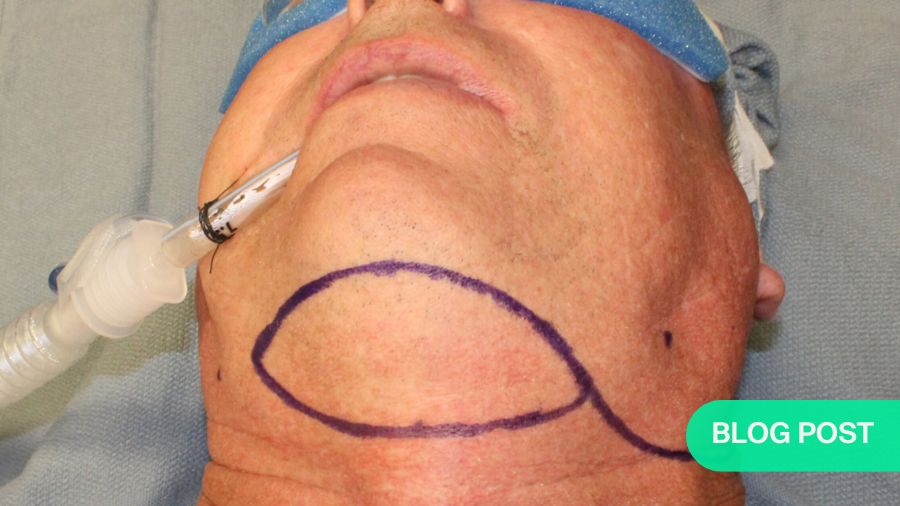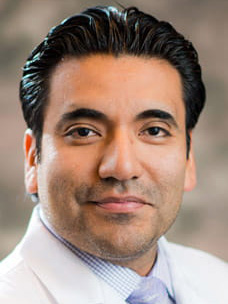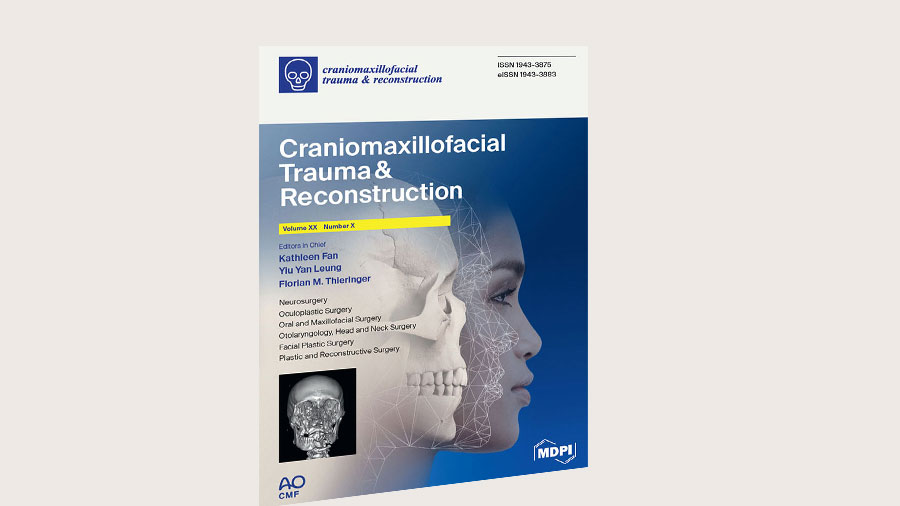The submental artery island pedicled flap in reconstructive surgery in the head and neck
BY DR CAMILO MOSQUERA AND DR CARLOS RAMIREZ

When searching for a method for reconstructive surgery in head and neck cancer, surgeons may turn to free flaps. But when a patient is not a candidate for a free flap procedure, a reliable alternative is the submental artery island pedicled flap. However, this has struggled to gain popularity due to difficulties in dissection as well as concerns of its use in oral cavity cancers.
In this article, we will talk through the potential indications, advantages, and challenges of the submental flap—a local pedicled flap used in head and neck reconstruction surgery.
Careful preparation allows for optimal flap harvesting
The submental artery island pedicled flap is an approximately 5 to 8 cm type C fasciocutaneous flap encompassing the submental artery branch of the facial artery with drainage provided by the submental vein. Most of the time, the submental artery lies superficial to the submandibular gland, however, as we discuss in our recently published review [1], sometimes there are anatomical variations which can increase the complexity of pedicle dissection.
The submental flap can be used to reconstruct small or large defects in the head and neck. Because of the location of the donor site, the scar can be well hidden which can provide a good esthetic outcome for the patient. However, there are some tips and pitfalls that surgeons need to be aware of to allow for good clinical outcomes. If we begin with the preoperative phase, we note that it is important to carry out a thorough history focusing on previous trauma or surgery. In patients with history of contralateral neck dissection, the submental artery may have already been sacrificed. In such cases, we recommend using a doppler scan to trace the path of the submental artery. Secondly, it is important to perform a pinch test of the skin below the inferior border of the mandible, as this will allow the surgeon to assess if there is enough skin to ensure primary closure of the donor site. Thirdly, it is crucial to assess the location of the defect. The submental flap can be used in neck defects but because of its arc or rotation, it can also reach the chin, face, and lips, as well as the oral cavity, maxilla and other midfacial sites.
A versatile flap for use in oral and facial reconstruction
As discussed, the submental flap can reconstruct various sized defects. It can be used in tongue reconstruction surgery to correct small as well as large defects, such as hemiglossectomy. Additionally, the submental flap can be used in defects arising from mandibulectomy or hemimaxillectomy with minimal donor site morbidity. As we note in our review [1], it is also an excellent choice in midface reconstruction because the submental skin has optimal properties such as good color match and pliability. When the submental flap is being transferred to the oral cavity, it is important to ensure good transfer techniques to avoid any potential complications; furthermore, when transferring to the maxilla or midface, the arc of rotation may need to be increased through division of the facial artery at the level of the mandibular body.
Safety in oncologic cases
As discussed in our review [1], there used to be concern surrounding the use of the submental flap in oncology cases. This was because it was thought that nodal disease could be transferred from the donor site to the reconstruction site. We found that there have been some studies which support the oncologic safety of the submental flap. If the choice is made to use a submental flap, we advise that surgeons must be comfortable preserving the submental vasculature while dissecting levels 1a (submental triangle) and 1b (submandibular triangle). In our practice, we prefer to raise the flap early in the surgery, so that the viability of the flap can be assessed after neck dissection. One tip is also to use bipolar electrocautery, a precise method which allows for careful dissection of the lymph nodes in level 1 while avoiding unintentional harm to the blood supply. By doing so, the submental flap maintains viability while level 1 is properly dissected. However, although we advocate the use of the submental flap in certain cases [1], it is important to have an alternative plan in case the viability of the submental flap is jeopardized during neck resection.
Minimizing complications for good clinical outcomes
When performing any reconstruction surgery, one of the most concerning potential complications is flap failure. This may occur if there is injury to the vascular pedicle during dissection. Some complications may also appear in the postoperative phase such as wound dehiscence, but this can be minimized through correct neck immobilization. Additionally, surgeons must be aware of postoperative hematoma as well as possible injury to the marginal mandibular branch of the facial nerve. Although the literature shows that the perioperative complication rates are comparable between the submental flaps and free flaps, there can be a higher rate of partial flap necrosis in the submental. This can be related to unintentional injury to the distal portion of the pedicle during the harvesting of the flap, or injury to the perforators due to poor flap handling.
Summary
The submental flap offers many advantages over free flaps for reconstruction in the oral and facial regions. The minimally visible scar provides esthetically pleasing results for patients, particularly when the superior incision follows the inferior border of the mandible and postoperative complications are minimized. The submental flap is also versatile, with a wide reach, good arc of rotation, and good color match for facial skin.
Nevertheless, at the forefront of any surgery is achieving a good clinical outcome for the patient whilst considering the individual patient’s needs, which thus dictates the correct choice of flap for reconstructive surgery. In our experience, the submental artery island flap is a reliable pedicled flap for head and neck reconstruction, with oncologic safety, minimal donor site morbidity. The aesthetic results in facial reconstruction are very pleasing for the patients due to the great color match.
For a deeper dive into the tips and pitfalls of the submental artery island pedicled flap, read the narrative review:
Mosquera C, Ramirez C. Narrative Review: Submental Artery Island Pedicled Flap, Indications, Tips, and Pitfalls. Craniomaxillofacial Trauma & Reconstruction.0(0):19433875231208565.
About the authors:
Camilo Mosquera, DDS, is an assistant professor of oral and maxillofacial surgery at the University of Texas Medical Branch, Texas, USA. He specializes in head and neck oncologic surgery and microvascular reconstruction.
Carlos Ramirez, MD, DDS, is the section Chief of Maxillofacial Surgery and fellowship director for the Head and Neck Oncology and Microvascular Reconstructive Surgery Fellowship at Ascension-St. John Hospital in Detroit, Michigan, USA. Ramirez’s research interests lie in head and neck oncologic surgery and microvascular reconstruction.
You might also be interested in:
Global Oral Cancer Diploma
Full program global launch in 2024, including all 10 modules.
AO CMF Global Study Club
A dynamic platform for AO CMF members to discuss cases, share experiences, and network effectively.





